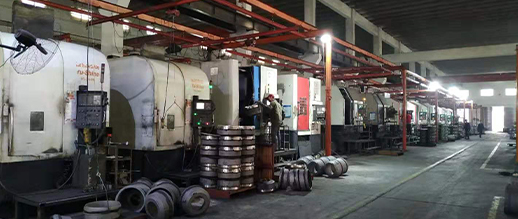
-
 Afrikaans
Afrikaans -
 Albanian
Albanian -
 Amharic
Amharic -
 Arabic
Arabic -
 Armenian
Armenian -
 Azerbaijani
Azerbaijani -
 Basque
Basque -
 Belarusian
Belarusian -
 Bengali
Bengali -
 Bosnian
Bosnian -
 Bulgarian
Bulgarian -
 Catalan
Catalan -
 Cebuano
Cebuano -
 Corsican
Corsican -
 Croatian
Croatian -
 Czech
Czech -
 Danish
Danish -
 Dutch
Dutch -
 English
English -
 Esperanto
Esperanto -
 Estonian
Estonian -
 Finnish
Finnish -
 French
French -
 Frisian
Frisian -
 Galician
Galician -
 Georgian
Georgian -
 German
German -
 Greek
Greek -
 Gujarati
Gujarati -
 Haitian Creole
Haitian Creole -
 hausa
hausa -
 hawaiian
hawaiian -
 Hebrew
Hebrew -
 Hindi
Hindi -
 Miao
Miao -
 Hungarian
Hungarian -
 Icelandic
Icelandic -
 igbo
igbo -
 Indonesian
Indonesian -
 irish
irish -
 Italian
Italian -
 Japanese
Japanese -
 Javanese
Javanese -
 Kannada
Kannada -
 kazakh
kazakh -
 Khmer
Khmer -
 Rwandese
Rwandese -
 Korean
Korean -
 Kurdish
Kurdish -
 Kyrgyz
Kyrgyz -
 Lao
Lao -
 Latin
Latin -
 Latvian
Latvian -
 Lithuanian
Lithuanian -
 Luxembourgish
Luxembourgish -
 Macedonian
Macedonian -
 Malgashi
Malgashi -
 Malay
Malay -
 Malayalam
Malayalam -
 Maltese
Maltese -
 Maori
Maori -
 Marathi
Marathi -
 Mongolian
Mongolian -
 Myanmar
Myanmar -
 Nepali
Nepali -
 Norwegian
Norwegian -
 Norwegian
Norwegian -
 Occitan
Occitan -
 Pashto
Pashto -
 Persian
Persian -
 Polish
Polish -
 Portuguese
Portuguese -
 Punjabi
Punjabi -
 Romanian
Romanian -
 Russian
Russian -
 Samoan
Samoan -
 Scottish Gaelic
Scottish Gaelic -
 Serbian
Serbian -
 Sesotho
Sesotho -
 Shona
Shona -
 Sindhi
Sindhi -
 Sinhala
Sinhala -
 Slovak
Slovak -
 Slovenian
Slovenian -
 Somali
Somali -
 Spanish
Spanish -
 Sundanese
Sundanese -
 Swahili
Swahili -
 Swedish
Swedish -
 Tagalog
Tagalog -
 Tajik
Tajik -
 Tamil
Tamil -
 Tatar
Tatar -
 Telugu
Telugu -
 Thai
Thai -
 Turkish
Turkish -
 Turkmen
Turkmen -
 Ukrainian
Ukrainian -
 Urdu
Urdu -
 Uighur
Uighur -
 Uzbek
Uzbek -
 Vietnamese
Vietnamese -
 Welsh
Welsh -
 Bantu
Bantu -
 Yiddish
Yiddish -
 Yoruba
Yoruba -
 Zulu
Zulu
Understanding the Importance and Function of 18-Wheeler Brake Drums in Heavy-Duty Trucks
Understanding the Importance of 18-Wheeler Brake Drums
In the realm of heavy-duty transportation, 18-wheelers play a crucial role in moving goods across vast distances. Ensuring the safety and efficiency of these vehicles is a top priority, especially when it comes to their braking systems. At the heart of the braking mechanism lies the brake drum, an essential component that helps maintain control and stop the vehicle safely.
What is a Brake Drum?
A brake drum is a circular metal component that works in conjunction with brake shoes to create friction and slow down or stop a vehicle. When the driver pushes the brake pedal, hydraulic pressure forces the brake shoes outward against the inner surface of the drum. This friction generates the necessary force to halt the motion of the 18-wheeler. Given the immense weight these trucks carry, the design and durability of brake drums are critical to their functionality.
Design Features and Materials
Brake drums for 18-wheelers are typically made from cast iron or forged steel due to their high strength and durability. These materials can withstand the extreme heat generated during braking, which can reach up to 1,000 degrees Fahrenheit or more in tough conditions. The design of a brake drum involves careful engineering to ensure optimal performance and longevity. Features such as ventilation holes are often incorporated to enhance cooling and prevent overheating during heavy use.
Additionally, many modern trucks utilize composite materials for their brake drums, which can provide weight savings and increased strength. Advances in manufacturing technologies have allowed for more efficient production processes, leading to higher quality brake drums and improved safety margins for truck operators.
The Role of Brake Drums in Safety
18 wheeler brake drum

Safety is paramount in the trucking industry, and brake drums play a vital role in preventing accidents. Regular maintenance, including inspection and replacement when necessary, is essential. A worn or damaged brake drum can lead to decreased braking performance, increased stopping distances, and ultimately, dangerous driving conditions.
Moreover, it is crucial for drivers to understand the signs of brake drum wear. Symptoms like unusual noises, vibrations, or a soft brake pedal can indicate that the brake drums need attention. Regular checks and balancing brakes can lead to a longer lifespan for the components and enhanced safety for all road users.
Innovations in Brake Drum Technology
The trucking industry is continuously evolving with technological advancements aimed at enhancing safety and efficiency. Innovations such as disc brakes are gaining popularity among some fleets due to their superior heat dissipation and consistently better performance. However, brake drums remain widely used in many heavy-duty trucks because of their reliability and lower cost.
Recent developments have also introduced adaptive braking systems, which can optimize braking power based on load conditions. These technologies work in tandem with existing brake drum systems, ensuring that even as trucks carry varying weights, the braking system performs optimally.
Conclusion
In conclusion, the brake drum is a critical component of 18-wheelers that plays a significant role in ensuring the safety and efficiency of heavy-duty trucks. Understanding its design, maintenance needs, and role in braking performance can help drivers and fleet managers make informed decisions about vehicle upkeep. As the industry continues to innovate, the future of brake drums and their technology will undoubtedly play a pivotal part in advancing road safety and efficiency in logistics and transportation. With the right practices in place, the trucking industry can continue to operate safely and effectively, ensuring that goods are delivered promptly and securely.
-
What Are Drum BrakesNewsJul.07,2025
-
Understanding Brake Drum MaterialNewsJul.07,2025
-
Semi-Trailer Brake Drum: A Key Component for Extreme Loads and Long-Distance TransportNewsJul.07,2025
-
Drum Brake Pads for SaleNewsJul.07,2025
-
Brake Drums for SaleNewsJul.07,2025
-
Brake Drum ManufacturerNewsJul.07,2025
-
Aluminum Brake Drums: The Future of High-Performance CarsNewsJul.07,2025
